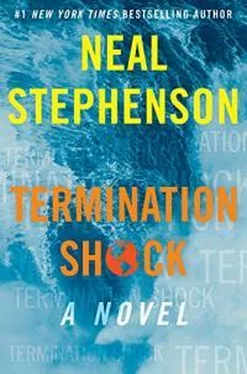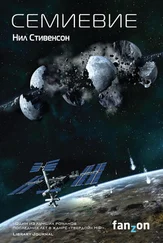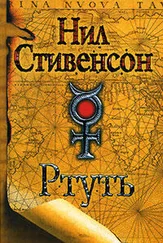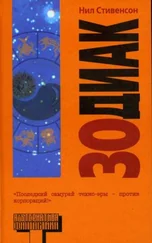As warned, the cars had gone into motion almost as soon as the guests had stepped up into them, and since then had never stopped for long. It was a back-and-forth, inconclusive shuffling. If Saskia had been a train buff, she would have followed the details avidly. This string of three antique carriages was being made part of a longer train consisting mostly of freight cars. The view out the window became longer as neighboring tracks were cleared. The sulfur pile came back into view in the distance. But eventually the train pulled out for good and began to traverse the largely industrial landscape that ran west along Buffalo Bayou from Trinity Bay (which they had now put behind them) toward downtown Houston and the vastness of Texas beyond.
In the midst of Houston’s industrial belt, only a few minutes’ transit time from the sulfur pile, the train slowed and eased onto a side track in a larger switching yard. Awaiting them, pre-assembled, was a string of half a dozen Amtrak passenger coaches, plus a dining car. The fleet of buses and SUVs, which Saskia had last seen at the T.R. Mick’s, had ended up here. She had to exit her suite and cross to the right side of the Money Car to see it. But looking into the windows of those coaches as they glided by, she could see faces she recognized, including some of her own staff.
Having passed all the Amtrak cars, the train slowed, stopped, reversed direction onto the side track, and backed up until it thudded into them. Saskia by now had abandoned all pretense of not finding it fascinating, and opened windows on both sides of the Money Car so that she could stick her head out and assemble a mental picture of what was going on. The Money Car had until now been the last in the train. Her compartment was in its rear. Another suite at its forward end appeared to house the lord mayor. Forward of that was the Tree Car, home to Sylvester and Michiel, and forward of that was the Beer Car, which was T.R.’s temporary residence as well as serving as a private saloon well stocked with, unsurprisingly, beer. Everything forward of the Beer Car, all the way to the locomotives, was freight: sulfur hoppers, container carriers, and the odd tank car.
What now happened was that the string of Amtrak coaches was coupled to the end of the Money Car, immediately to the rear of Saskia’s compartment. The corridor that ran along one side of her bedchamber was terminated by a door—of polished wood, naturally, with gleaming brass fittings—with a window in it, through which she watched as the train eased together and finally connected with a jolting thud. On the other side of the gap she could see Amelia’s face framed in the corresponding window. They had been in touch electronically the entire day, of course, but one of Amelia’s training and disposition could never quite relax until she had eyes on the person she was charged with looking after. So the relief on her face was evident even across the gap.
Making all the connections between the cars took another few minutes, but then the train pulled out onto the main line and began to pick up speed toward downtown Houston. The doors opened. Amelia and Fenna came forward, followed by a porter carrying Saskia’s baggage. Willem took care of stashing it in Saskia’s compartment while Fenna set up the apparatus pertaining to her trade on the tiny makeup table in the corner. Alastair and Rufus, the Odd Couple, entered and loitered awkwardly until Saskia invited them to make themselves at home in the middle part of the Money Car, which was a sort of parlor. Terribly important Englishmen stormed past them to get after Bob. A waiter emerged and took drink orders. Saskia excused herself and lay down on her bed for a nap. When she woke up, the fiery sun had reddened and cooled. She opened her curtain to behold the hill country of Texas, glowing in the flat red light of the setting sun.
CHANDIGARH
Laks took the move from Amritsar to Chandigarh as an opportunity to do a little more traveling around the Land of Five Rivers. He had actually seen very little of it so far. It was at this point that the social network—no, the society—that he’d become a part of, just by sticking with it, humping the langar’s lentils and digging the akhara’s dirt, came into its own and he saw its full power and virtue. Sikhs were well represented among truck drivers. Pick a road out of town and everyone knew someone who would be driving a truck or a bus or even a motorbike in that direction soon. And if not soon enough, there was free food at the langar and maybe some pointers on where to find a place to sleep. So once he had established a basic fund of trust and cred, grown his beard out, learned how to dress and how to talk, then, just by virtue of being a likely young man traveling on his own he was able to move around the Punjab, if not always quickly, then at least cheaply. In a way, the less he spent, the easier it got, for people were more willing to help out a scrappy wanderer sleeping rough than they were a Canadian tourist with a fat wallet.
His objective was to go and visit all five of the eponymous rivers: from north to south, the Jhelum, the Chenab, the Ravi, the Beas, and the Sutlej. Eventually all of them flowed into the Indus, the great river that gave India its name.
He was under no particular compulsion to do this. It wasn’t a ritual pilgrimage or anything like that. It just appealed somehow to his innate sense of completeness. He’d be able to say that he had really seen the Punjab.
Amritsar was right between the Ravi and the Beas, so those were easy day trips. He went to the site on the western bank of the Beas where Alexander the Great had thrown in the towel, abandoned all hope of adding Pentapotamia to his empire, and turned back toward far Macedonia with his exhausted and disgruntled troops.
The Ravi coincided, along part of its course, with the India-Pakistan border, cutting the Punjab in half—an amputation that had led to a great deal of trouble and explained in a roundabout way why Laks’s family were running gas stations in Canada. Since the fateful year of 1947 the river had evinced a total lack of respect for the boundary line solemnly drawn on maps, and strayed to either side of it as floods pushed it out of its banks. By choosing a meander that looped into India, Laks was able to visit the Ravi, wade in its water, and evaluate fish habitats without having to go through the rigamarole of crossing into Pakistan. In the minds of his people, what lay on the other side was West Punjab. He’d have liked to visit it. But he had now overstayed his six-month tourist visa. He was in India illegally. He could cross over into Pakistan, but not come back in. And being stuck in Pakistan was not on his bucket list.
The Chenab and the Jhelum ran decisively through Pakistan in their middle courses. Farther north, though, closer to their mountain wellsprings, they could be reached in Kashmir. So that leg of the trip was the first time Laks had seen mountains since coming to India.
He found that he had missed mountains. In Canada they just plunged straight down into the ocean. At night in Vancouver you could see skeins of light suspended in midair high above street ends: ski areas just outside of town, illuminated for nocturnal customers. He had gone up there and snowboarded with his friends. He missed that dimensionality to the landscape.
He got into a spot of trouble when, on his way back south, he encountered a roadblock where Indian authorities were checking IDs. It all had to do with the border dispute between Pakistan and India. So he had to bail out of the truck he was riding in—no feat at all, since it was stopped dead in a five-mile-long traffic jam, and the driver had switched off the engine—and backtrack on foot. Eventually he hitchhiked his way into the neighboring province of Himachal Pradesh and then found his way back down into East Punjab just by hiking across the border in a mountainous area where there could be no roadblocks, since there were no roads. That was his first encounter with Indian wilderness, which—obvious as it might sound—was just that. No one lived there. The landscape was natural. When he did happen upon a road, he hitchhiked back down into the lowlands, feeling he’d made a connection with the ancient gurus. For many had been the occasions when early Sikh leaders had been forced by martial setbacks to withdraw into these hills and lie low for months or years.
Читать дальше

![Нил Стивенсон - Криптономикон [litres]](/books/23868/nil-stivenson-kriptonomikon-litres-thumb.webp)







![Нил Стивенсон - Лавина [litres с оптимизированной обложкой]](/books/414066/nil-stivenson-lavina-litres-s-optimizirovannoj-ob-thumb.webp)
